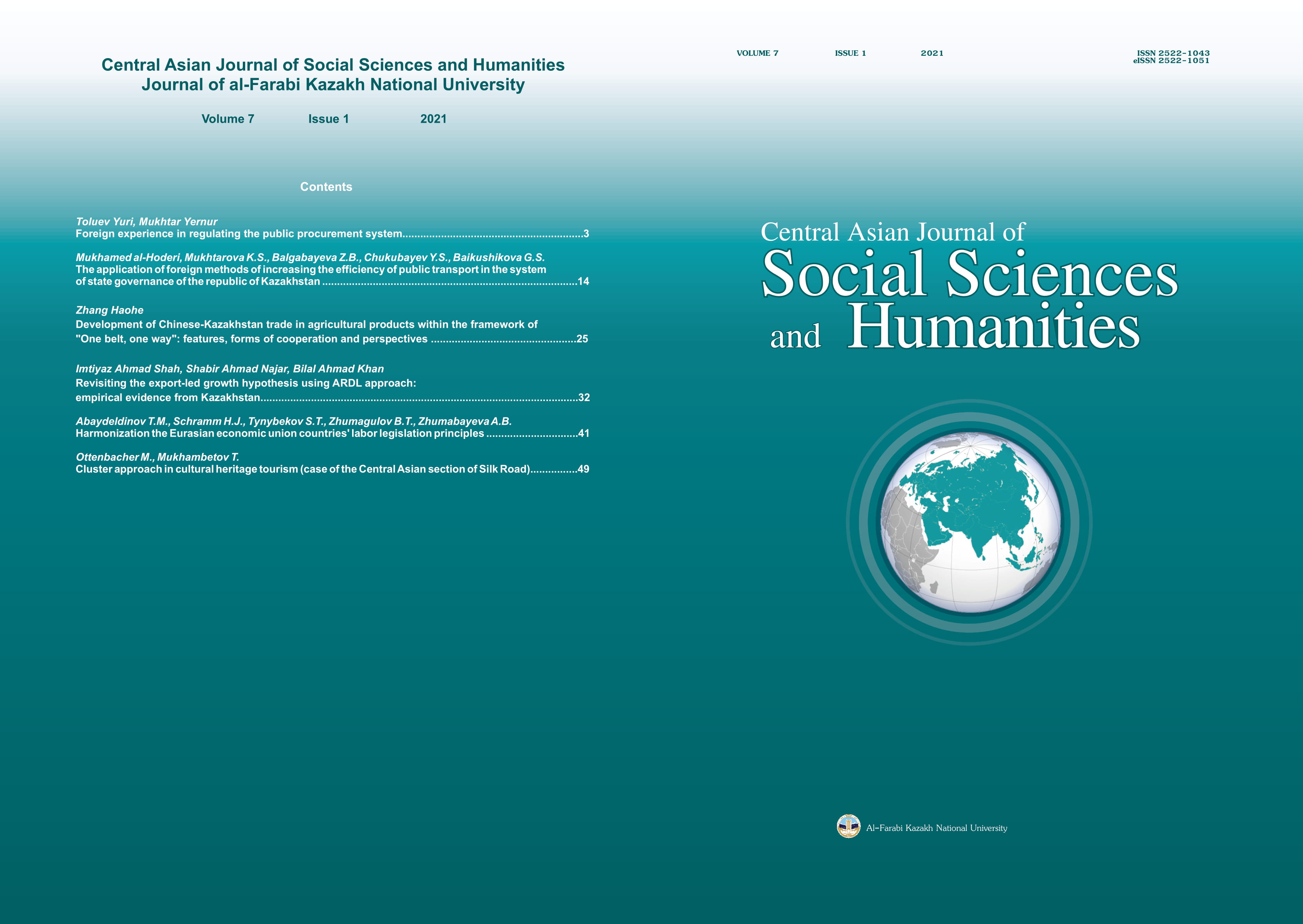HARMONIZATION THE EURASIAN ECONOMIC UNION COUNTRIES’ LABOR LEGISLATION PRINCIPLES
DOI:
https://doi.org/10.26577/CAJSH.2021.v7.i1.05Abstract
Creation of united labor market on the territory of Eurasian economic Union leads toapproximation of the labor laws of the Union’s states. That kind of approximation aims to make cooperation and functioning of the newborn union more effective. The problem concerned the development of the directions and approaches of formation of the uniform labor legislation, among which are the institutes of an employment contract. The article considers the issues of harmonization ofthe EAEU countries labor legislation, balance between principles of labor law and the generally recognized world standards in the labor field. The article provides analysis of current legal acts adopted by the member states on the state level and in the framework of the EAEU. The article considers the need to develop a unified concept of harmonization of labor legislation, which, we believe, should be understood as a rapprochement of national labor laws, but not their unification, reduced only to the development of uniform standards designed for similar relations. Harmonization of the labour legislation of EurAsEC States should be considered from the point of view of its rapprochement, and not from the point of view of its unification, carried out toa State in order to further its development. In this sense, the harmonization of labor legislation in the EAEU states and the unification of labor legislation in a single country, carried out using national legal techniques, methods, should be considered as philosophical categories: general and private.
Key words: labor relations, Eurasian Economic Union, principles of law, principle of prohibition of discrimination, forced labor.




